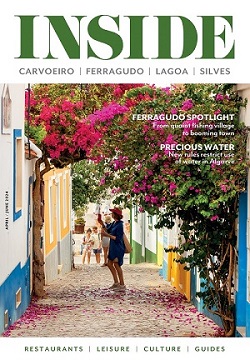At the historical Quinta da Palmeirinha, producer João Mariano makes new vintages with some of the region’s oldest vines
– September 9, 2022
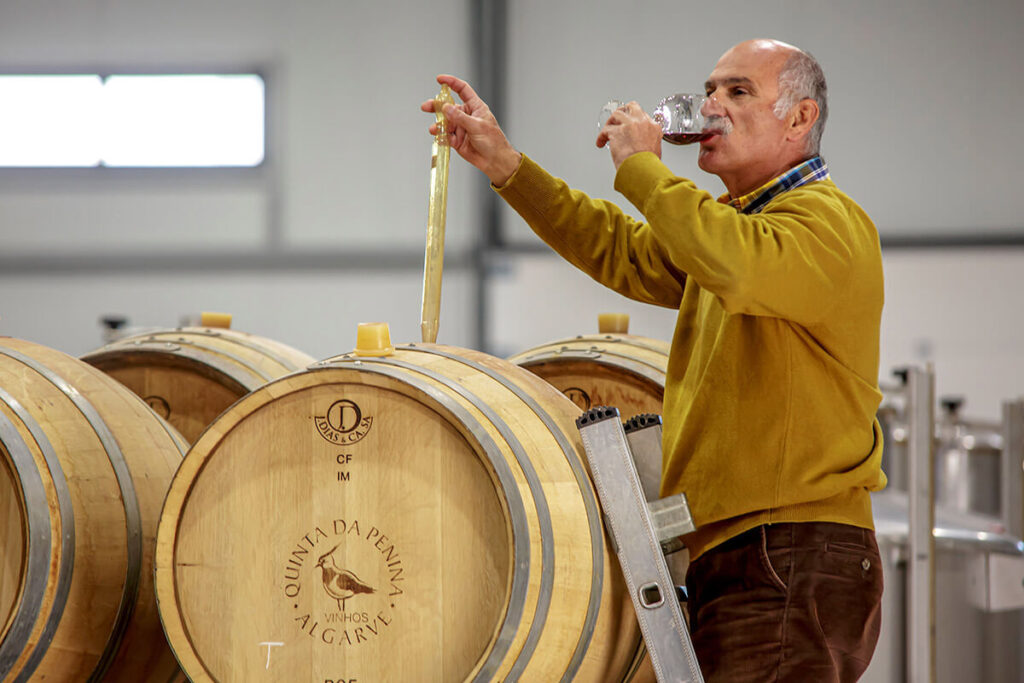
The Algarve may still be Portugal’s least-known winemaking region, but what many are not aware of is that its history goes back centuries. Its first vines were planted by the Phoenicians and the Greeks in the 8th century BC, and later Romans and Carthaginians developed this fruitful trade.
More recently, in the 1960s, the region’s wines were a vital part of the ration troops received during the Portuguese colonial war. “This was at the time when wine was produced in cooperatives. It was consumed as a food product, drunk by the working classes and sailors as a source of energy,” explains João Mariano, a local wine producer, storyteller and one of the guardians of the Algarve’s winemaking heritage.
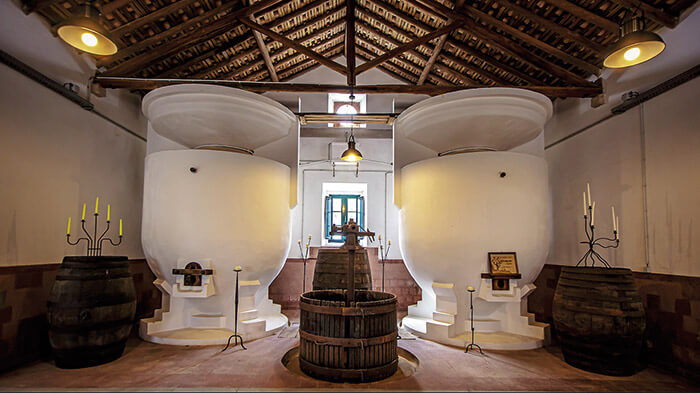
He tells us the story of the Negra Mole variety and how it came to dominate the region. “Cooperatives used to pay according to the alcohol content of the grape variety; the higher the content, the higher the value. Soon producers planted the varieties with the highest alcohol content, such as Negra Mole”, which also produces significant quantities of large grape bunches that are very resistant to disease.
Discovered to be Portugal’s second oldest grape variety, it is different from other reds because it does not have uniformly coloured berries or dark skin. Today the variety is used to make red wines when blended with small amounts of a teinturière variety, such as Alicante Bouschet, Touriga Nacional or Petit Verdot. “But in the Algarve, locals liked lighter reds; it was the tradition,” insists João.
Sadly, with the arrival of tourism, many vineyards were ripped up for their sandy soils to be sold for construction, leaving the region destitute of its viticultural heritage. But some old vines remain and are now being resuscitated by producers like João Mariano to recreate the Algarve’s unique brand.
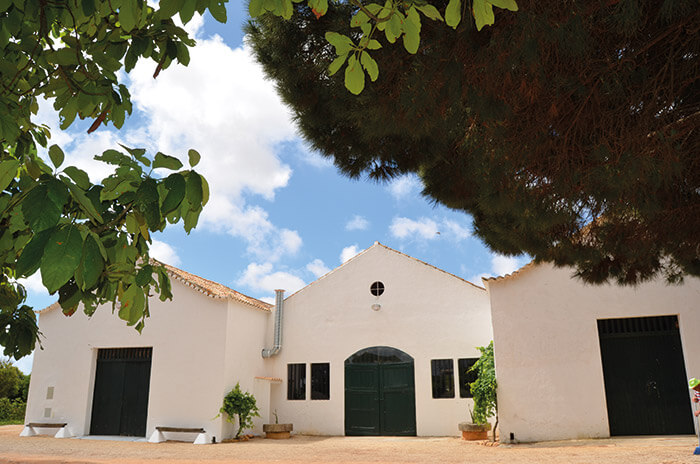
This local producer is passionate about viticulture and the region’s history. An agronomist by trade, he planted his first 10 hectares of vines in 2000 in the Portimão area. This is where he created the Quinta da Penina brand, followed by two more hectares of vines at Quinta dos Cabeços, in Lagoa. His goal was to obtain grapes from two distinct terroirs to produce wines with equally distinct qualities. His brands include Quinta da Penina, Foral de Portimão and Mare Nostrum, a brand he created for local restaurants.
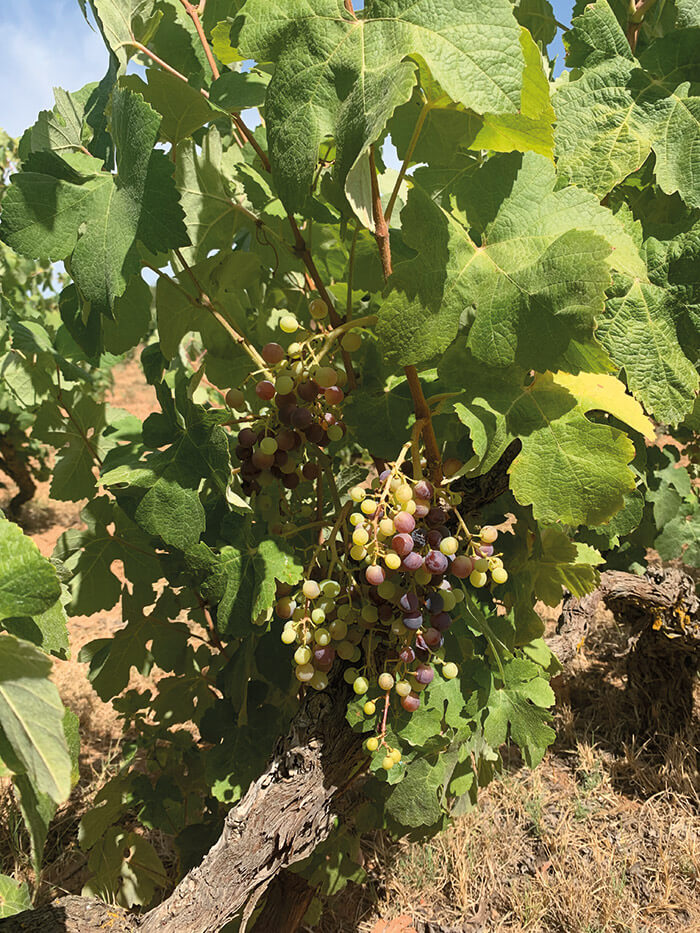
In 2012, he started exploiting a vineyard that would turn him into the guardian of some of the region’s most historical vines. Planted in 1942, these are Negra Mole old vines. “They are still full of vigour. They produce beautiful bunches of multicoloured grapes and are believed to be some of the Algarve’s oldest Negra Mole vines still in economic production,” he points out.
Quinta da Palmeirinha
These old vines are part of a large historical wine-producing estate on the border between Lagoa and Silves: the Quinta da Palmeirinha. “It is located in an area called Lobito, where vineyards are reported to have existed since the Phoenicians and Carthaginians landed on the Algarve coast.”
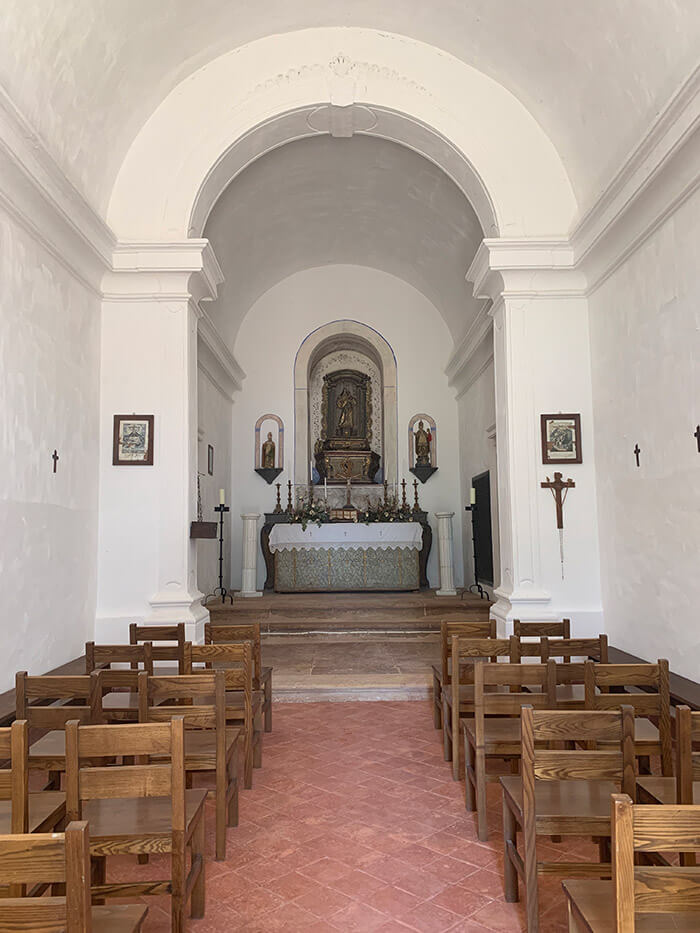
The vines were planted around a beautiful 18th-century Manor House, which was once a hermitage, and from where pilgrimages to give thanks for the good harvests once started. The estate has belonged to current owner Alexandra Pacheco’s family for several generations. Two generations back, Joaquim Valadares Pacheco, who was the Mayor of Portimão (1946-1950), boosted wine production in the region. Not only was this notable man a producer of award-winning wines (his famous Negra Mole vines won him an award for the best regional wine during World War II), but he also played an essential part in the creation of Lagoa’s cooperative winery.
João explains that a group of farmers from the region got together to create the cooperative winery in Lagoa. “They applied for funds through the national wine board, which supported the construction of cooperatives throughout the country. Whilst they waited for the funds to build the new winery to arrive, they produced the first wines of the future cooperative at Palmeirinha.” Some of these were vinified in the farm’s biggest treasures: two imposing Algerian-style amphorae that still stand in the estate’s winery.
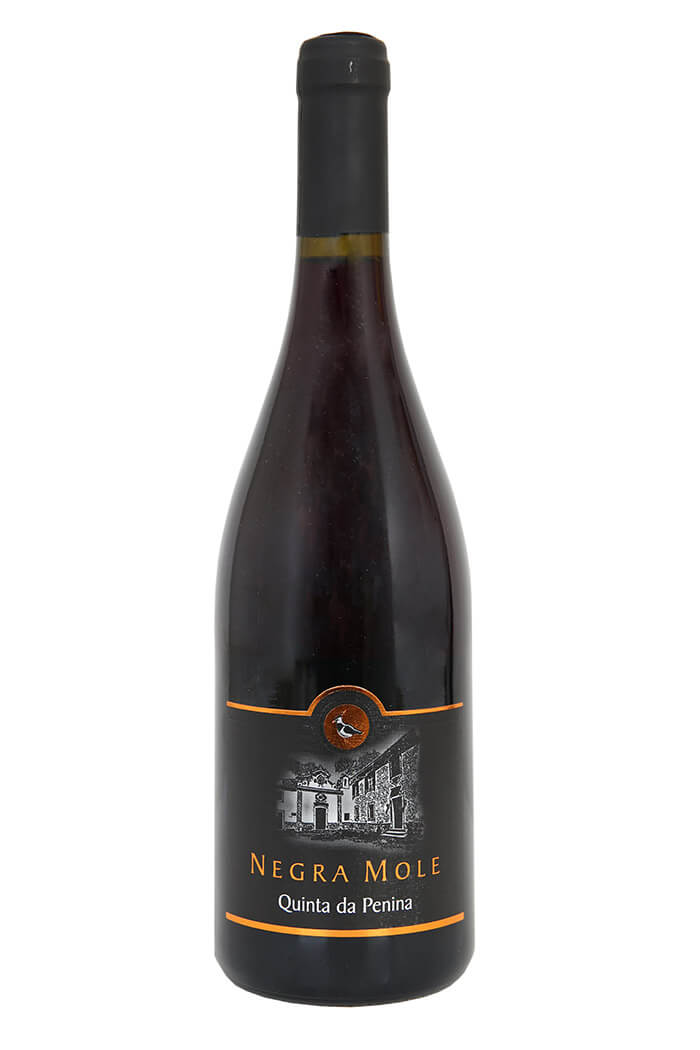
Negra Mole tinto 2019
Today, the 8.7-hectare vineyard is made up of red Portuguese varieties: Negra Mole, Castelão, Aragonez, Touriga Nacional and Alicante Bouschet; and the white Crato Branco – the Algarve’s emblematic white variety. “Here, you can see the resistance of the plant,” says João as he walks between the rows of 80-year-old Negra Mole vines. Most of the existing vines were uprooted and replaced by carob trees. Luckily, the Negra Mole vines remained. “The owners didn’t want agriculture here because it paid poorly, but they also didn’t want to let the farm’s winemaking tradition disappear.”
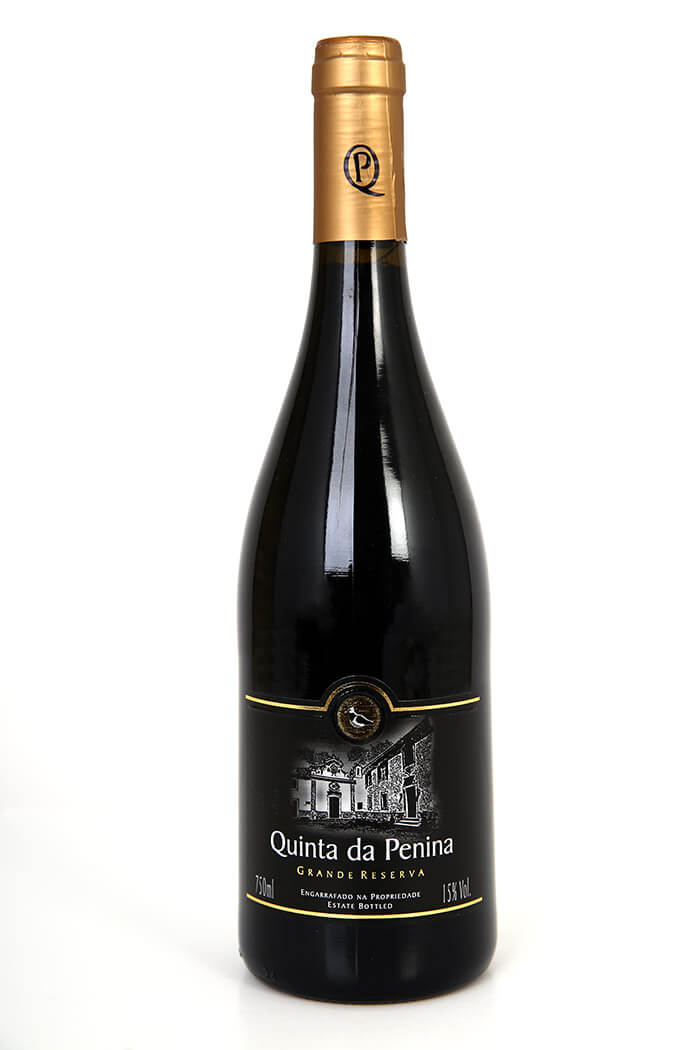
Quinta Penina Grande Reserva, tinto
The charming Manor House has been refurbished for tourism and events. The property offers two guesthouses, with rooms for four and six people, which can be rented separately or as one holiday property with two pools. The old winery was cleaned out and updated for events, but precious winemaking instruments, such as hand presses and the two magnificent amphorae, remain as part of the decoration. “I hope one day they will turn this space into a small museum,” admits João Mariano. “They still have ancient and unique viticultural instruments that can no longer be found.”
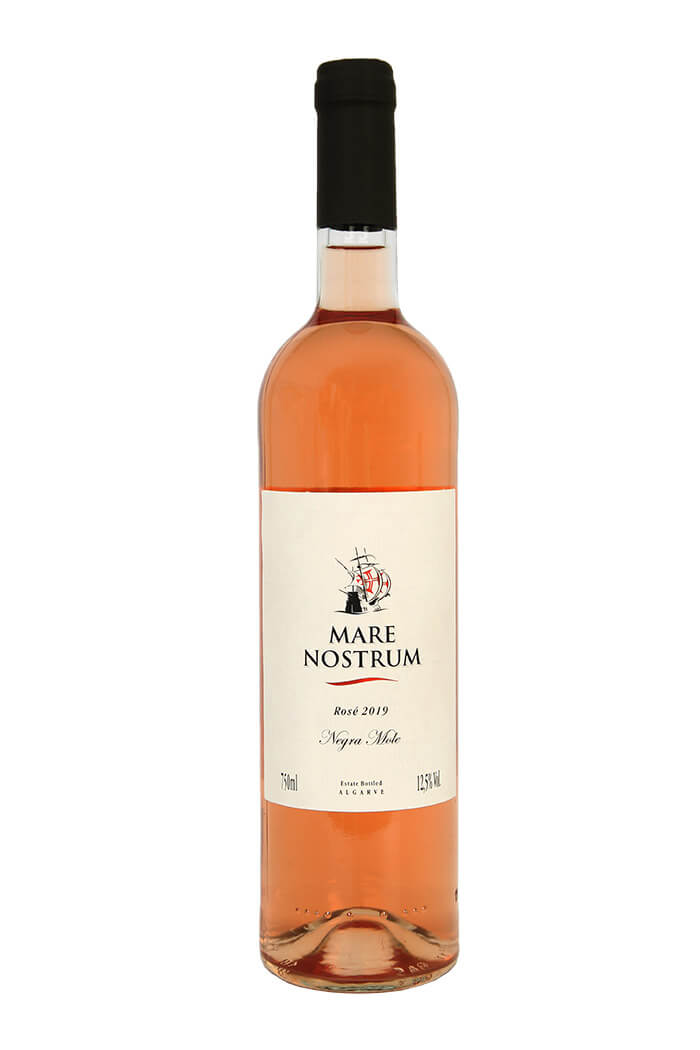
Mare Nostrum Rosé
João makes several wines with Quinta da Palmeirinha’s old Negra Mole vines, starting with the alluring salmon-coloured Foral de Portimão rosé (€6.50). “It’s the grape variety’s natural colour when pressed,” he states. Then there is the Quinta da Penina 2019 (€10), a Negra Mole to which he adds just 10% of Castelão to give it a ruby-red colour. With aromas of fresh black fruits, notes of pepper and orange blossom, it is fresh and fruity in the mouth, with smooth, velvety tannins.

Red Mare Nostrum
The Quinta da Penina Tradição (€6.50), a blend of equal parts of Negra Mole and Castelão, with ripe red fruits and vanilla aromas, is a full-bodied red, smooth in the mouth, with an elegant finish. As for white, the Quinta da Penina DOP (€5), made from 100% Crato Branco, has fruity notes of pear and pineapple. In the mouth, it is balanced and fresh, with good volume and a long and persistent finish.
João is also known for making top-class, single-varietal Petit Verdot wines. His Quinta da Penina Grande Reserva 2016 (€10), made with grapes produced in Portimão, won a gold medal at the International Berlin wine competition in 2020.
Visit Quinta da Penina brand or follow on Instagram and Facebook.
Text Alexandra Stilwell













